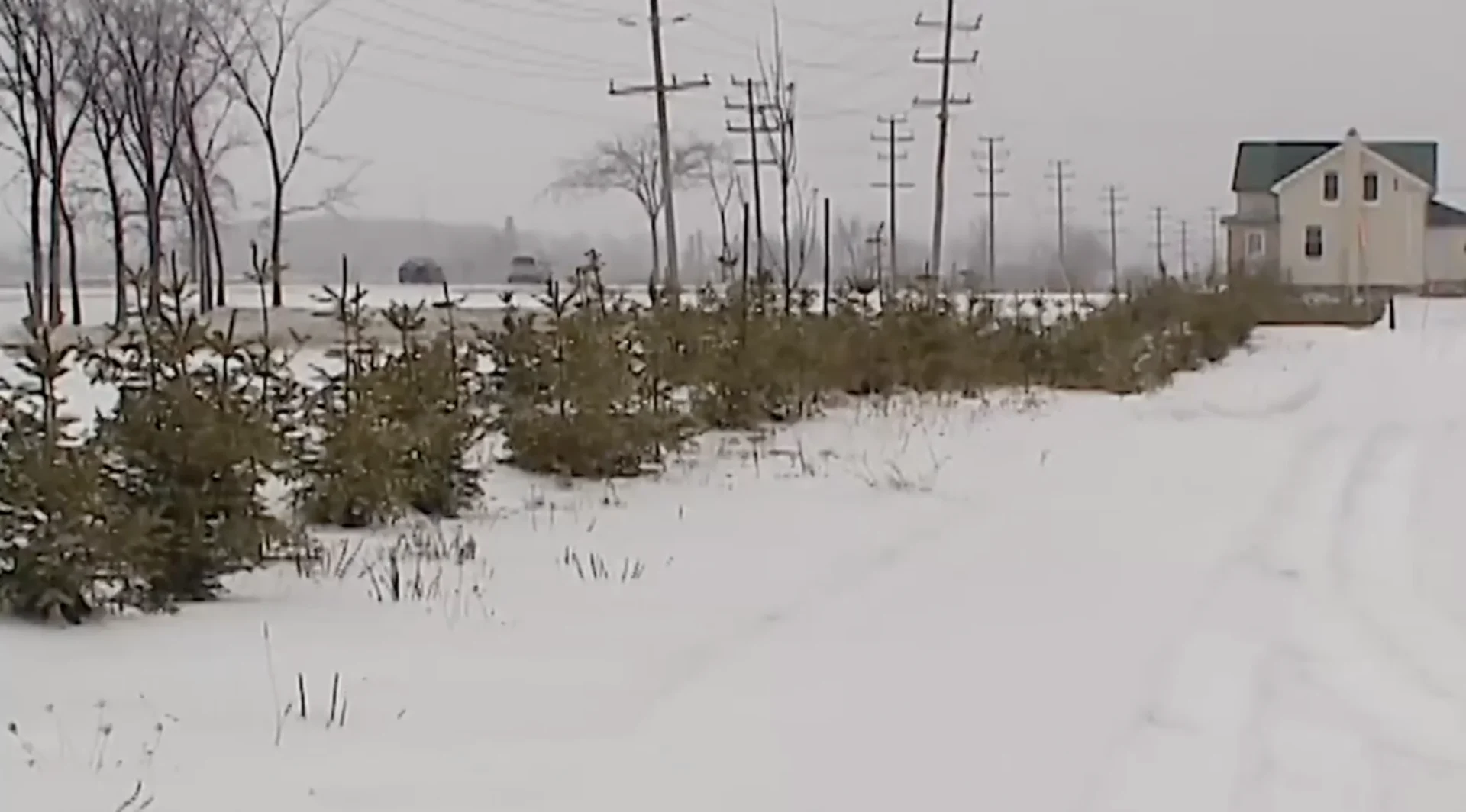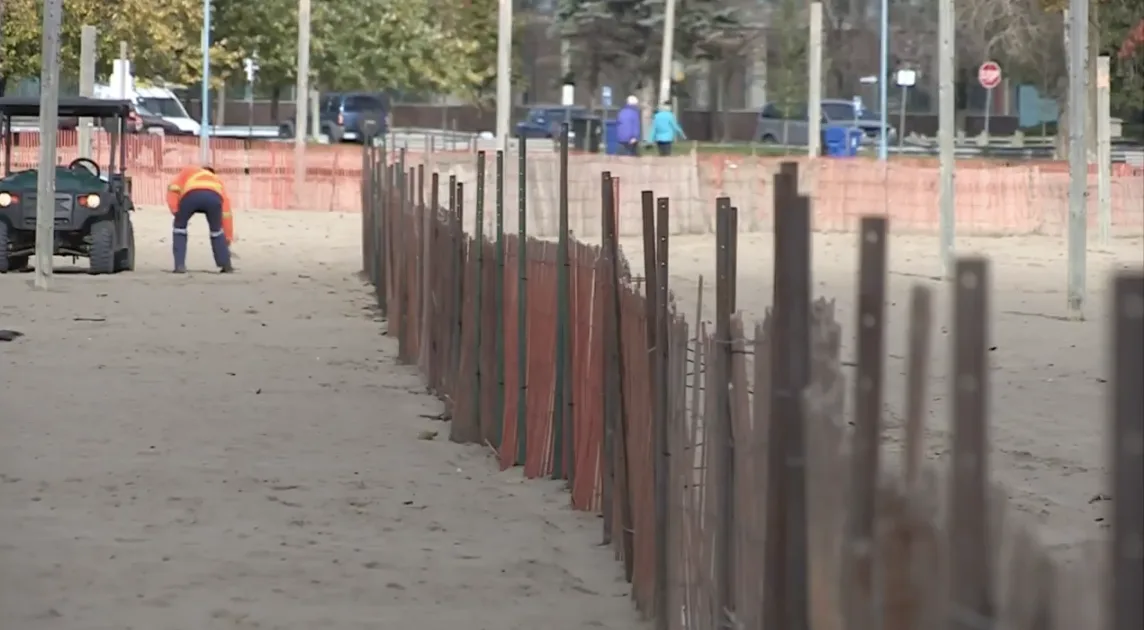
How ‘living snow fences’ help make roads safer for drivers during winter
Building a natural snow fence from trees is an environmental and cost-effective way to reduce blowing snow on highways and rural roads. The Weather Network's Mark Robinson has details on how these work in the video and article below.
I couldn’t see the end of the hood of the Jeep that I was driving through the snow squall, so I kept the speed down to around 30 km/h. The wind howling down from the north was going at least double that, while tearing huge amounts of snow off the fields that I could only assume that I was driving through. Visibility was so bad that not only could I not see the end of the hood, the edges of the road were obscured in a white murk.
I dropped my speed even more as only brief glimpses let me see down the road...something seemed to be there, across the road, but I couldn’t quite make it out.
In one of those brief moments of clarity, I saw what made me totally confused for more than a few moments, until I realized that the white wall in front of me wasn’t blowing snow, it was drifting snow. More importantly, it was a drift taller than the car and had swept right across the full width of the road. I slammed the brakes and the Jeep slid to a halt with the bumper half into the drift. It took my heart rate a little longer to come back to a semblance of normal.
Drifting snow had brought my chase to a screeching halt.
If only there were a way to stop snow from piling onto roads during and after a storm…
Whiteout conditions and drifting can cause accidents and other transportation problems. A variety of methods used to combat this issue have been used, including red wood snow fences and newer plastic grid-style fences. While these style of fences work, they involve a significant amount of labour and tax money to erect and take down each year. They also don’t tend to be reusable, so the costs are passed on year-on-year.

While wood snow fences work as a protective barrier from blowing and drifting snow, they involve a significant amount of labour and tax money to erect and take down each year. (Mark Robinson/The Weather Network)
Enter the living snow fence.
On a cold, clear day, just before the snow began to really kick in across Ontario, I walked along the edge of one of these fences with the Supervisor of Forestry Operations for the Grand River Conservation Authority (GRCA), Nathan Munn. I asked about what the fences were and how they worked.
“It’s a row of trees, usually spruce or cedar that will get dense as it grows. The function is to slow down the blowing snow that comes off farmer’s fields or other open areas.”

An example of a living snow fence. (Mark Robinson/The Weather Network)
RELATED: Did a water main break near your home? Here's what happens next
He points to the spruce trees behind him, “We set it back far enough that when the snow blows over and through the trees, it’s deposited on the field instead of drifting across the road.”
I asked him about the advantage of the trees over the common red stick fences you see everywhere, “The trees are permanently in place and do the job year after year. You also get all the other benefits of trees and on farms, the farmer gets all the other advantages of wind breaks which reduces soil erosion and helps with crop yields. They’re also good for carbon sequestration and wildlife.”
“They’re usually put back about 30-60 metres from the road because we use a 3:1 ratio. So, for every 10 metres tall the tree grows, the snow will deposit 30 metres downwind, but that depends on the type of tree used. The denser the trees, the less distance the snow will deposit.”
WATCH BELOW: WHY SNOW SQUALLS ARE SO DIFFICULT TO FORECAST
Having been in snow squalls late at night, I’ve seen this in effect as I drive from a forested spot into the open fields. Visibility can drop to near-zero in seconds — depending on the speed of the car — and that can lead to very scary outcomes.
“Generally, we work with tree planting organizations, and the cost to farmers can be zero as it’s a program that’s of benefit to the general public,” Munn explained. “If the farmers were planting windbreaks for themselves, they might plant them along the edges of the fields, but the living fences have to take part of the field, so we work with the farmer to make sure their equipment can still get around the trees and some of our programs will offset the small amount of crop loss.”
These fences can also be used in urban areas, and although these are generally only used in rural spots, the GRCA has been identifying spots that are prone to drifting snow and speaking with property owners to expand where the fences can be put in.
Given the massive drifts of snow that I’ve had to plow my storm-chase vehicle through, with the attendant risk of being stuck in said snow drift, I’m more than happy to see more and more of these fences going up.
Find out more on how snow fences work by watching the video that leads this article.
You can find meteorologist and storm chaser Mark Robinson on Twitter, @StormhunterTWN.










